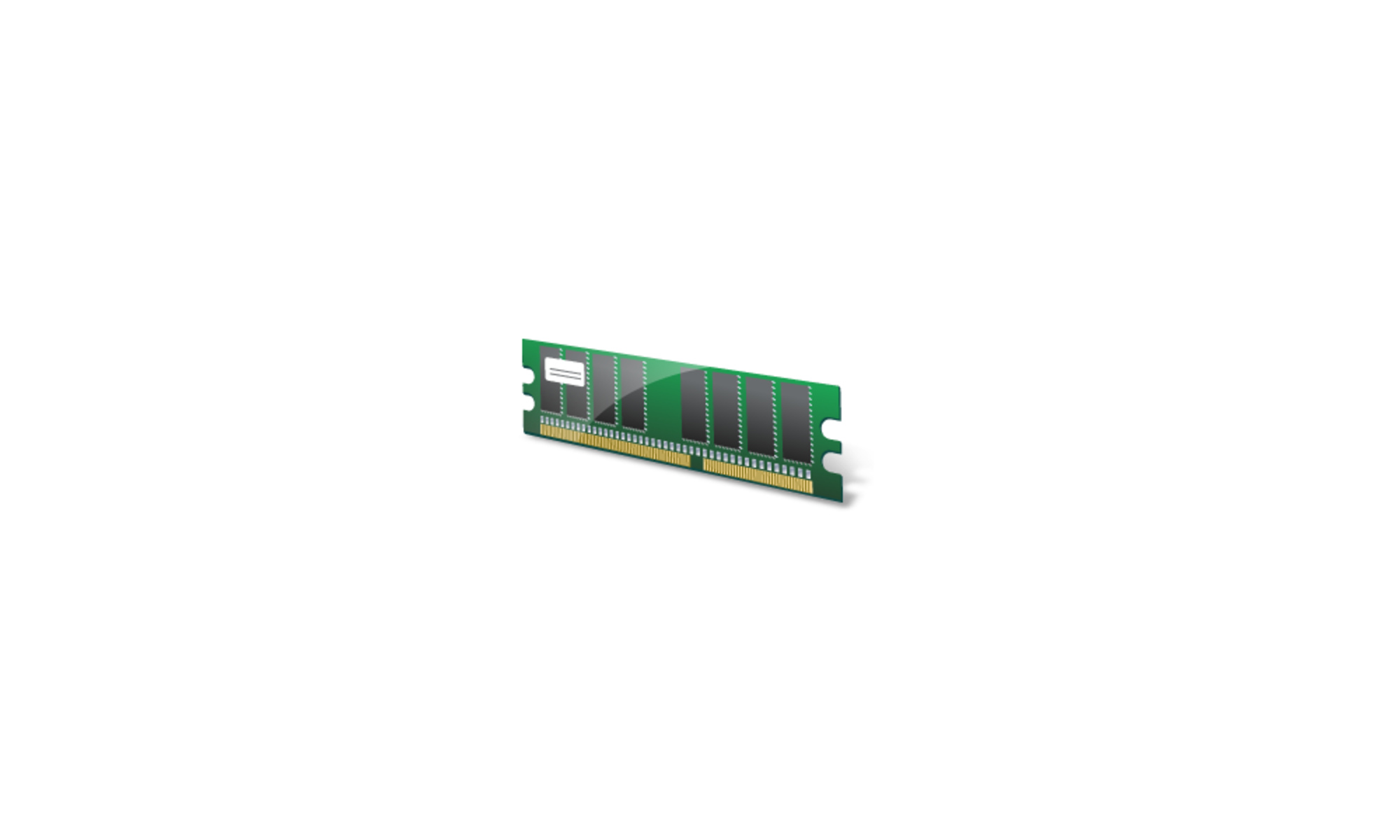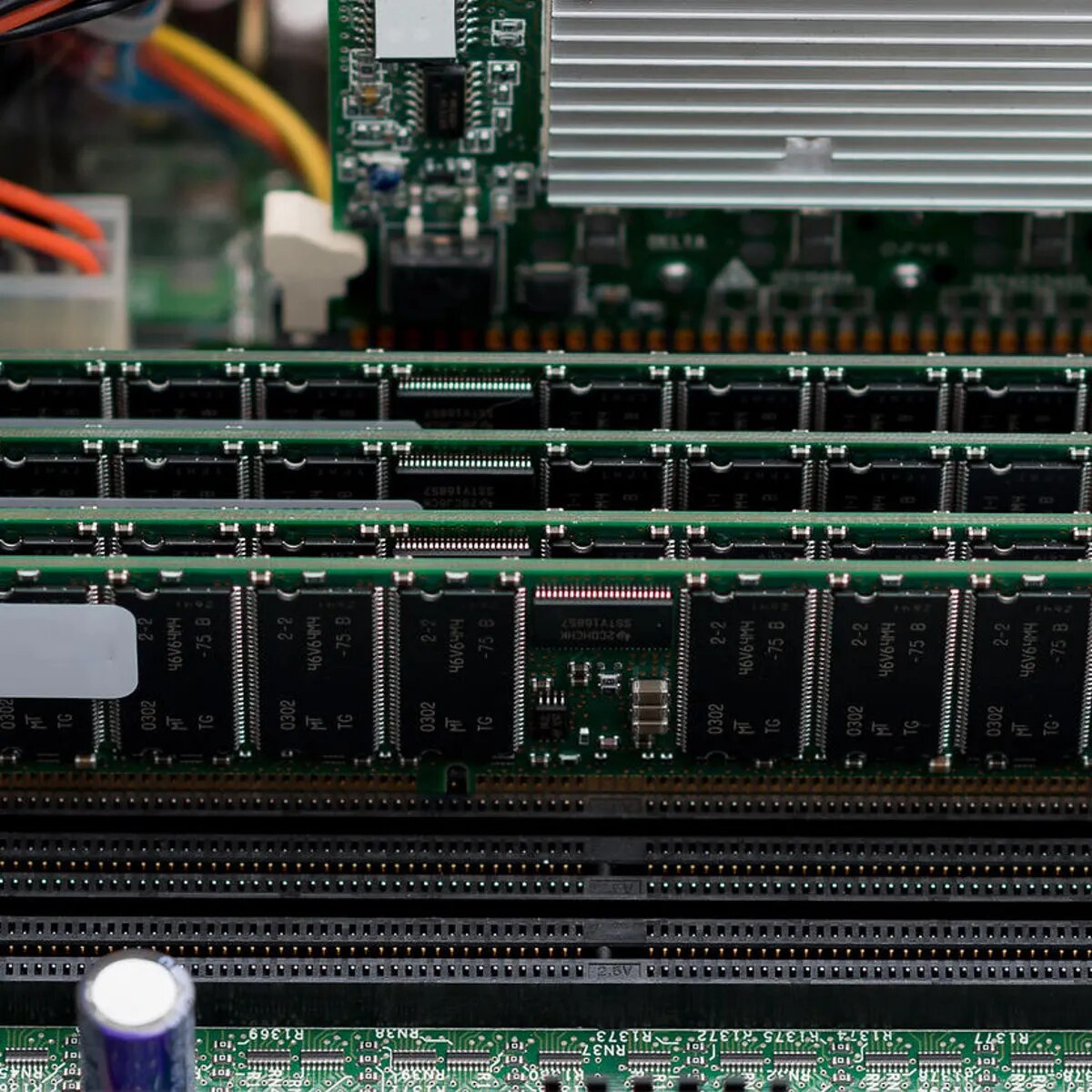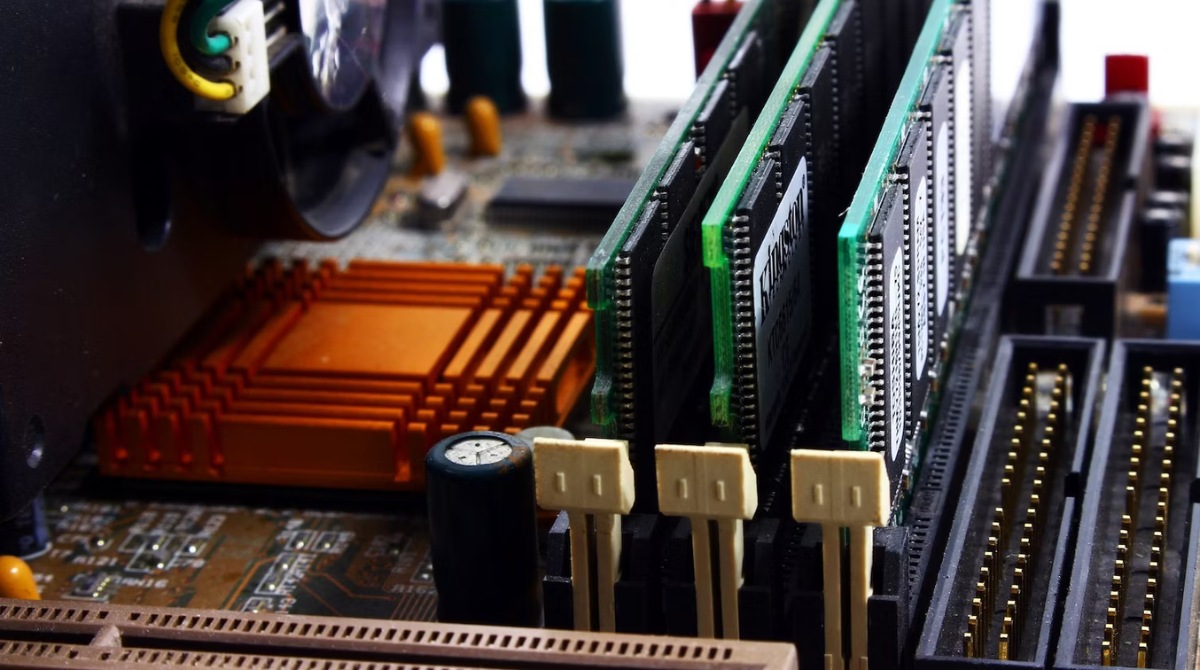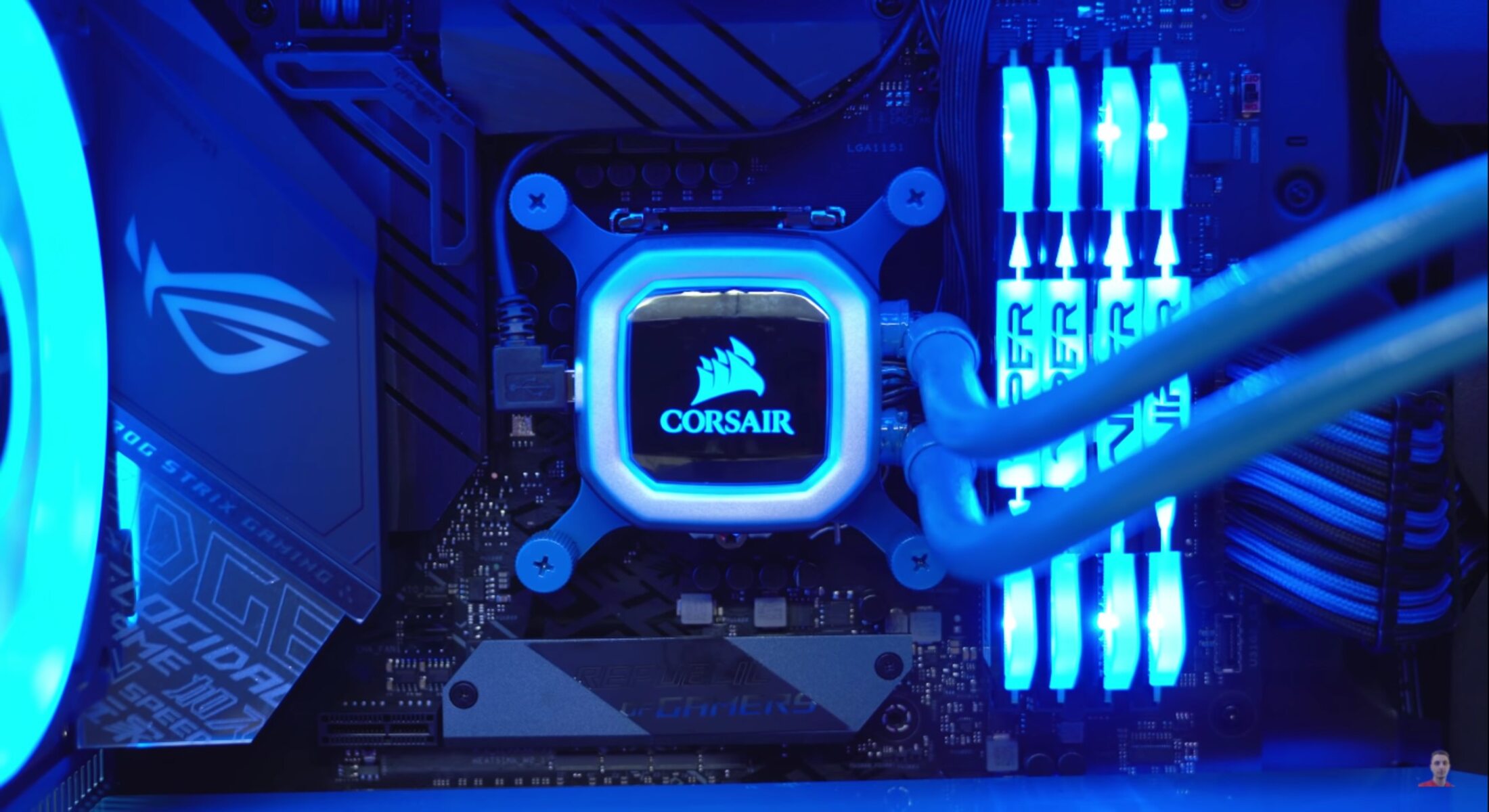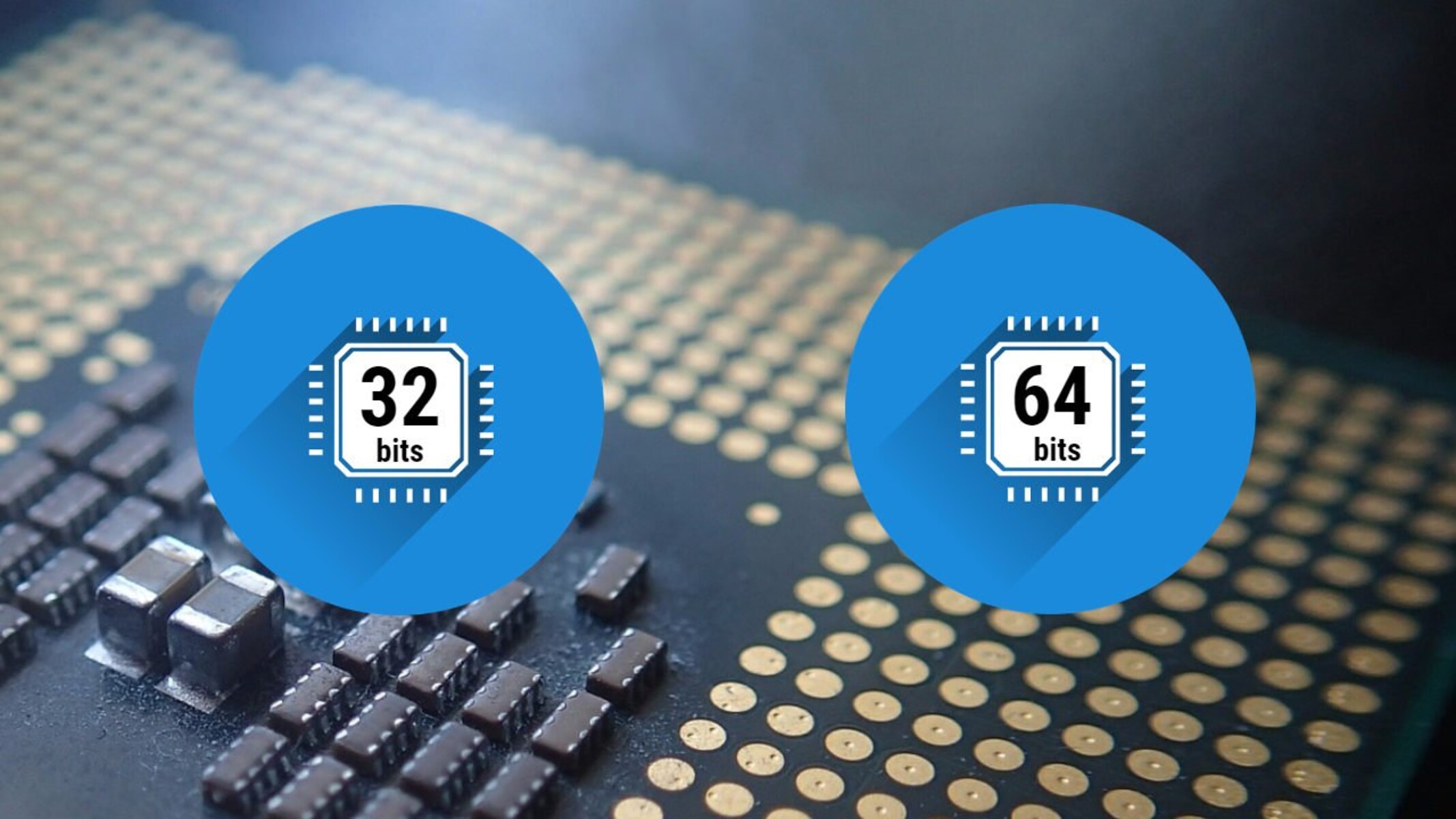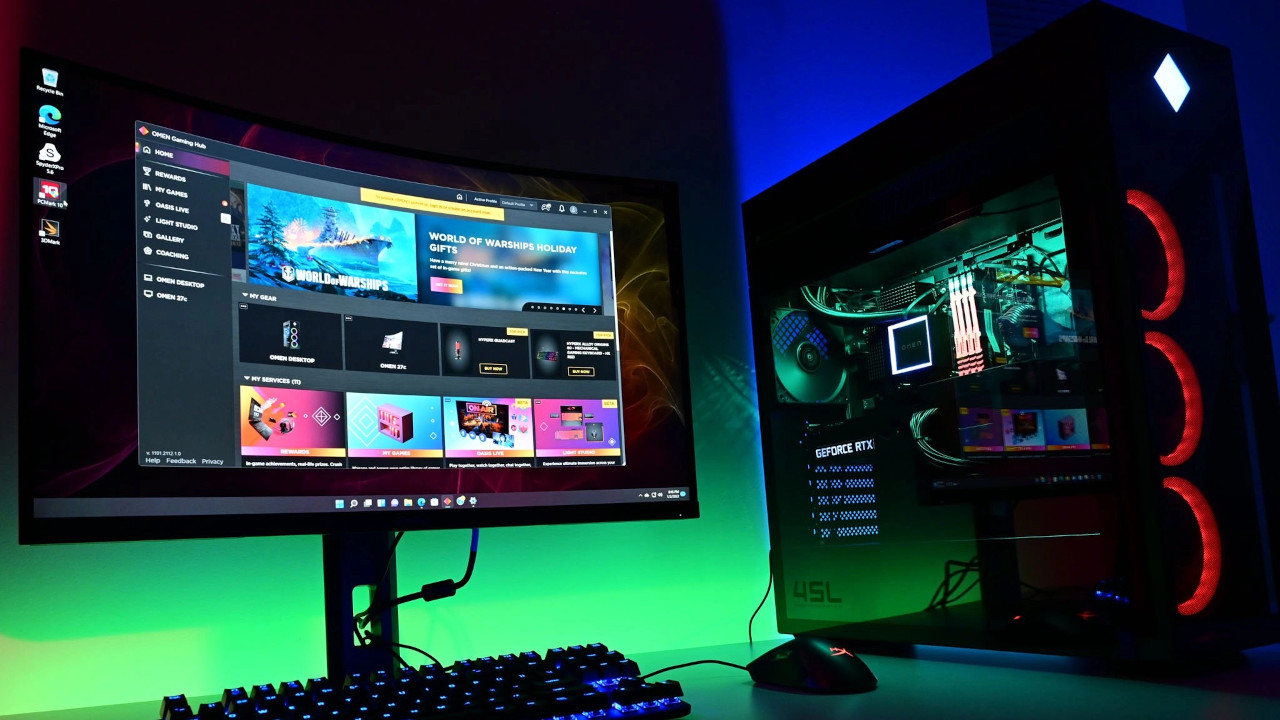Introduction
Welcome to our guide on the maximum amount of RAM supported by 32-bit editions of Windows Vista. If you’re using a 32-bit version of Windows Vista, you may have wondered how much RAM you can actually utilize on your system. Understanding the limitations of a 32-bit operating system is crucial, as it can impact the performance of your computer and determine if you need to upgrade to a 64-bit edition.
Windows Vista was released in 2006 and offered both 32-bit and 64-bit editions. The 32-bit version was more commonly used, as it was compatible with a wider range of software and hardware. However, 32-bit systems have limitations when it comes to utilizing system memory.
RAM, or Random Access Memory, is an essential component of any computer system. It is a type of volatile memory that provides temporary storage for data that is actively being used by the operating system and running applications. The more RAM you have, the smoother and faster your system will operate, as there will be more space to store and access data quickly.
Now, you might be wondering why we are specifically focusing on 32-bit editions of Windows Vista. The reason is that 32-bit operating systems have a limitation when it comes to addressing system memory. A 32-bit system can only address a maximum of 4 gigabytes (GB) of RAM.
This limitation exists because of the binary nature of the 32-bit architecture. In a 32-bit system, memory addresses are represented by 32 bits, allowing for only 2^32 (4,294,967,296) possible addresses. These addresses are used to access different locations in the system memory. Since each address represents a byte, a 32-bit system can theoretically address up to 4 GB of memory.
However, not all of this 4 GB is available for use by the operating system and applications. Some of the system memory is used by hardware devices, such as the graphics card and other peripherals, which are mapped into this address space. As a result, the maximum amount of RAM that can be utilized by a 32-bit edition of Windows Vista is typically less than 4 GB.
In the following sections, we will delve deeper into the specifics of the maximum RAM limitations of 32-bit editions of Windows Vista. We will also discuss how to identify the installed RAM on your system and explore the possibilities of upgrading to a 64-bit edition of Windows Vista to overcome these limitations.
What is a 32-bit edition of Windows Vista?
A 32-bit edition of Windows Vista refers to the operating system version that is designed to run on computers with a 32-bit processor architecture. The term “32-bit” here refers to the number of bits that can be processed by the processor in a single operation.
In simpler terms, a 32-bit system can handle data in chunks of 32 bits, while a 64-bit system can handle data in chunks of 64 bits. This distinction is significant because it affects the amount of memory that can be addressed by the operating system and the applications running on it.
In the case of Windows Vista, the 32-bit editions were more commonly used at the time of its release. These editions were compatible with a wider range of software and hardware, making them the preferred choice for most users.
However, it’s important to note that a 32-bit edition of Windows Vista has limitations when it comes to utilizing system memory. As mentioned earlier, a 32-bit system can only address a maximum of 4 gigabytes (GB) of RAM.
Additionally, a 32-bit operating system has limitations when it comes to accessing other system resources, such as the maximum file size that can be handled or the maximum number of processes that can be running simultaneously.
While a 32-bit edition of Windows Vista can still be functional for basic computing tasks, it may not be suitable for more memory-intensive activities, such as running resource-demanding applications or working with large datasets.
It’s worth noting that the 32-bit limitation is not specific to Windows Vista; it applies to all 32-bit operating systems. However, as technology has advanced, 64-bit systems have become the standard due to their ability to handle larger amounts of memory and improved overall performance.
In the next section, we will explore how RAM works in 32-bit systems to better understand the limitations and implications of using a 32-bit edition of Windows Vista. Understanding these details will help you make informed decisions about your computer’s capabilities and potential upgrades.
How does RAM work in 32-bit systems?
RAM, or Random Access Memory, plays a crucial role in the performance of a computer system. It is a type of volatile memory that stores data that is actively being used by the operating system and running applications. The more RAM a system has, the better its performance and multitasking capabilities.
In a 32-bit system, RAM is addressed using a 32-bit memory address space. Each memory address represents a location in the system memory, and these addresses are used by the processor to read from and write to different areas of the RAM.
Since a 32-bit system uses 32-bit memory addresses, there are 2^32 (4,294,967,296) possible addresses. This means that a 32-bit system can theoretically address up to 4 gigabytes (GB) of RAM.
However, not all 4 GB of the memory can be utilized by the operating system and applications. Some of the memory space is reserved for hardware devices that need to be mapped into the address space. These devices include the graphics card, sound card, network interface, and other peripherals.
As a result, the available memory for the operating system and applications is less than the total physical memory installed on the system. The exact amount varies depending on the hardware configuration, but it typically ranges from 3 GB to 3.5 GB.
The limitation of a 32-bit system to address only up to 4 GB of RAM is a result of the binary nature of the 32-bit architecture. Each memory address represents a byte of data, and since there are 2^32 possible addresses, the total addressable memory space is 4 GB.
It’s worth noting that this limitation applies to all 32-bit operating systems, not just Windows Vista. To fully utilize memory beyond the 4 GB limit, you need to switch to a 64-bit operating system, such as a 64-bit edition of Windows Vista.
In the next section, we will explore the maximum amount of RAM supported by 32-bit editions of Windows Vista and delve into the implications of this limitation on system performance and capabilities.
Limitations of 32-bit systems
While 32-bit systems have been widely used in the past, they come with inherent limitations that can hinder their performance and capabilities. Understanding these limitations is crucial in determining whether an upgrade to a 64-bit system is necessary.
One of the main limitations of 32-bit systems is the maximum amount of RAM they can utilize. As mentioned earlier, a 32-bit operating system can only address up to 4 gigabytes (GB) of RAM. This limitation can severely impact the performance of memory-intensive applications and tasks.
Another limitation is the maximum file size that can be processed by a 32-bit system. Due to the limited memory address space, 32-bit systems can only handle files of up to 4 gigabytes. This can be a constraint when working with large datasets or multimedia files that exceed this size.
In addition, 32-bit systems have a limit on the number of processes that can be running simultaneously. The maximum number of process IDs that can be assigned in a 32-bit system is around 2^16 (65,536). While this may seem like a large number, it can become a limitation in scenarios where numerous processes need to be executed simultaneously.
Moreover, certain software and drivers may have compatibility issues with 32-bit systems, especially as technology advances and manufacturers focus on developing drivers and applications for 64-bit architectures. This can result in limited availability of updates, patches, and software optimizations for 32-bit systems.
Additionally, 32-bit systems may not be able to fully utilize the capabilities of modern hardware. Many newer devices and peripherals are designed to work optimally with 64-bit architectures, meaning that users of 32-bit systems may not be able to take full advantage of the latest technology advancements.
Lastly, although not a direct limitation of the system itself, it is worth noting that the market has shifted towards 64-bit systems as the standard. This means that software developers are prioritizing development for 64-bit platforms, and some newer applications and games may not be fully compatible with 32-bit systems.
Considering these limitations, it may be worth considering upgrading to a 64-bit system, such as a 64-bit edition of Windows Vista, to overcome these constraints and take advantage of the increased performance, expanded memory addressing capabilities, and improved compatibility with modern software and hardware.
In the next section, we will discuss the maximum RAM supported by 32-bit editions of Windows Vista, shedding light on the specific limitations users may face when using this operating system.
Maximum RAM supported by 32-bit editions of Windows Vista
When it comes to the maximum amount of RAM that can be utilized by 32-bit editions of Windows Vista, the theoretical limit is 4 gigabytes (GB). However, due to hardware mappings and other system requirements, the actual usable memory is typically less than 4 GB.
The exact amount of RAM that can be utilized by a 32-bit edition of Windows Vista depends on various factors, including the hardware configuration and the specific edition of Windows Vista being used.
In most cases, the maximum usable RAM for a 32-bit edition of Windows Vista is around 3 GB to 3.5 GB. This means that even if you have more than 4 GB of RAM installed on your system, a significant portion will not be accessible or utilized by the operating system and applications.
The remaining memory that is not accessible to the system is reserved for hardware mappings. These mappings include the memory addresses allocated to the graphics card, sound card, network interface, and other peripherals. These devices require a portion of the addressable memory space, which reduces the available RAM for the operating system and applications.
It’s important to note that the limitation on the usable RAM is not specific to Windows Vista; it is inherent to all 32-bit operating systems. This includes earlier versions of Windows, such as Windows XP, and other operating systems like Linux and macOS.
If you find that the limited amount of RAM is impacting the performance of your system and hindering your ability to run memory-intensive applications, it may be worth considering upgrading to a 64-bit edition of Windows Vista.
64-bit operating systems, such as the 64-bit edition of Windows Vista, provide significant advantages when it comes to addressing larger amounts of RAM. They are capable of utilizing over 4 GB of RAM, allowing for improved multitasking, faster processing, and smoother performance.
Upgrading to a 64-bit edition of Windows Vista will enable your system to fully access and utilize the installed RAM, providing you with a more powerful computing experience.
In the next section, we will explore how to identify the amount of RAM installed on your system and determine if it is a 32-bit or 64-bit edition of Windows Vista.
Identifying the installed RAM on your system
Before determining whether your system is running a 32-bit or 64-bit edition of Windows Vista, it’s important to first identify the amount of RAM installed on your computer. This information can help you understand the current capabilities of your system and assess whether an upgrade may be necessary.
There are several ways to identify the installed RAM on your system:
1. Task Manager: Press Ctrl+Shift+Esc to open the Task Manager. In the Performance tab, you will find details about the total amount of physical memory (RAM) installed on your system.
2. System Information: Press the Windows key + R to open the Run dialogue box. Type “msinfo32” and press Enter to open the System Information window. Under the System Summary section, you will find details about the total installed physical memory (RAM).
3. Control Panel: Open the Control Panel by searching for it in the Start menu. In the Control Panel, navigate to “System and Security” and click on “System.” Under the “System” section, you will find information about the installed physical memory (RAM).
4. Command Prompt: Open the Command Prompt by searching for it in the Start menu. Type “wmic memorychip get capacity” and press Enter. This will display the capacity of each memory module installed on your system.
By using one of these methods, you can easily identify the amount of RAM installed on your computer.
Once you’ve determined the amount of RAM, you can then check if your system is running a 32-bit or 64-bit edition of Windows Vista. To do this:
1. Open the Control Panel and navigate to “System and Security.”
2. Click on “System.”
3. Under the “System” section, you will find information about your operating system, including whether it is a 32-bit or 64-bit edition of Windows Vista.
Now that you have identified both the installed RAM and the edition of Windows Vista running on your system, you can assess whether an upgrade to a 64-bit edition would be beneficial to fully utilize the installed RAM and enhance your system’s performance and capabilities.
In the next section, we will discuss the possibility of upgrading from a 32-bit to a 64-bit edition of Windows Vista and the benefits that come with such an upgrade.
Upgrading to a 64-bit edition of Windows Vista
If you find that the limitations of a 32-bit edition of Windows Vista, such as the restricted amount of usable RAM, are impacting your system’s performance and capabilities, upgrading to a 64-bit edition can be a viable solution.
Before proceeding with an upgrade, it’s essential to verify if your hardware supports a 64-bit operating system. The primary requirement is a 64-bit processor. To check if your processor is 64-bit capable:
1. Open the Control Panel and navigate to “System and Security.”
2. Click on “System.”
3. Under the “System” section, look for the “System Type” information. It should indicate whether your system is running a 32-bit or 64-bit operating system compatible with your processor.
If your processor is 64-bit capable, you can proceed with the upgrade. Here are the steps to upgrade to a 64-bit edition of Windows Vista:
1. Back up your data: Before performing any major system changes, ensure that you have a backup of your important files and data to prevent any loss in case of unexpected issues during the upgrade process.
2. Obtain a 64-bit installation disc: You will need a 64-bit installation disc of Windows Vista. If you don’t have one, you can usually purchase it from Microsoft or obtain it from other trusted sources.
3. Perform a clean installation: Upgrading from a 32-bit to a 64-bit edition requires a clean installation. This means that you will need to reinstall your operating system and reinstall all your programs and files after the installation. Make sure to follow the installation prompts carefully.
4. Install necessary drivers: After the installation, ensure that you install 64-bit versions of the necessary drivers for your hardware devices. This will ensure optimal performance and compatibility with your 64-bit operating system.
5. Restore your files and applications: Once the operating system and drivers are installed, restore your files and reinstall your applications. Make sure to use the correct 64-bit versions of any software you use.
It’s important to note that upgrading to a 64-bit edition of Windows Vista may require additional hardware or software changes. For example, some legacy devices or software may not be compatible with 64-bit systems. Therefore, it’s recommended to check the compatibility of your hardware and software beforehand.
By upgrading to a 64-bit edition of Windows Vista, you can take full advantage of increased memory addressing capabilities, allowing for better performance, improved multitasking, and compatibility with modern software and hardware.
In the next section, we will provide a brief summary of the key points discussed in this article.
Conclusion
In this guide, we have explored the maximum amount of RAM supported by 32-bit editions of Windows Vista and discussed the limitations and implications of running a 32-bit system. We have also provided insights into how RAM works in 32-bit systems and identified the installed RAM on your system. Additionally, we discussed the possibility of upgrading to a 64-bit edition of Windows Vista to overcome the limitations of a 32-bit system.
It is important to understand that a 32-bit edition of Windows Vista can only address up to 4 gigabytes (GB) of RAM, with the actual usable memory typically being less due to hardware mappings and system requirements. This limitation can impact the performance of memory-intensive tasks and applications.
To identify the installed RAM on your system, you can rely on various methods, including the Task Manager, System Information, Control Panel, and Command Prompt. Knowing your installed RAM is crucial in assessing your system’s capabilities.
If you find that the limitations of a 32-bit system are hindering your computer’s performance, upgrading to a 64-bit edition of Windows Vista can be a suitable solution. A 64-bit system can fully utilize larger amounts of RAM, providing improved multitasking, faster processing, and a smoother overall computing experience.
Before upgrading, it’s important to check if your hardware is 64-bit capable and ensure that you have reliable backups of your data. A clean installation of the 64-bit edition will be required, along with the installation of compatible 64-bit drivers and software.
Ultimately, the decision to upgrade to a 64-bit edition of Windows Vista depends on your specific needs and the requirements of your tasks and applications. Consider the limitations of a 32-bit system, the benefits of a 64-bit system, and the compatibility of your hardware and software.
We hope this guide has provided you with valuable insights into the maximum RAM limitations and upgrade possibilities for Windows Vista. By making an informed decision, you can maximize the performance and capabilities of your computer system.







